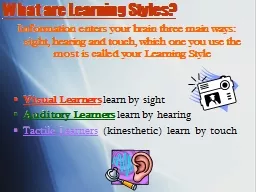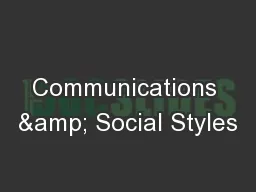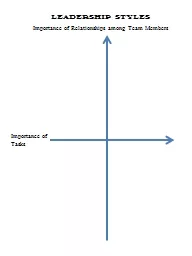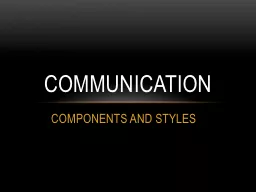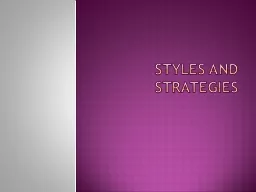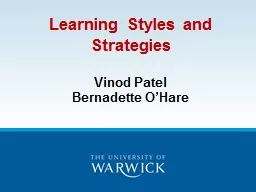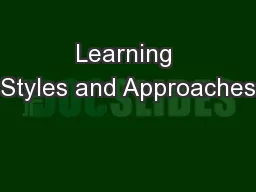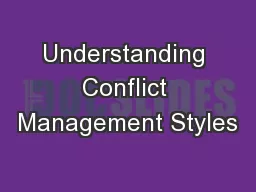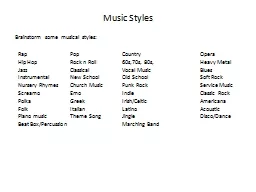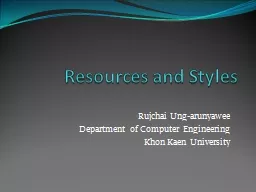PPT-What are Learning Styles?
Author : luanne-stotts | Published Date : 2019-11-23
What are Learning Styles Information enters your brain three main ways sight hearing and touch which one you use the most is called your Learning Style Visual Learners
Presentation Embed Code
Download Presentation
Download Presentation The PPT/PDF document "What are Learning Styles?" is the property of its rightful owner. Permission is granted to download and print the materials on this website for personal, non-commercial use only, and to display it on your personal computer provided you do not modify the materials and that you retain all copyright notices contained in the materials. By downloading content from our website, you accept the terms of this agreement.
What are Learning Styles?: Transcript
Download Rules Of Document
"What are Learning Styles?"The content belongs to its owner. You may download and print it for personal use, without modification, and keep all copyright notices. By downloading, you agree to these terms.
Related Documents

